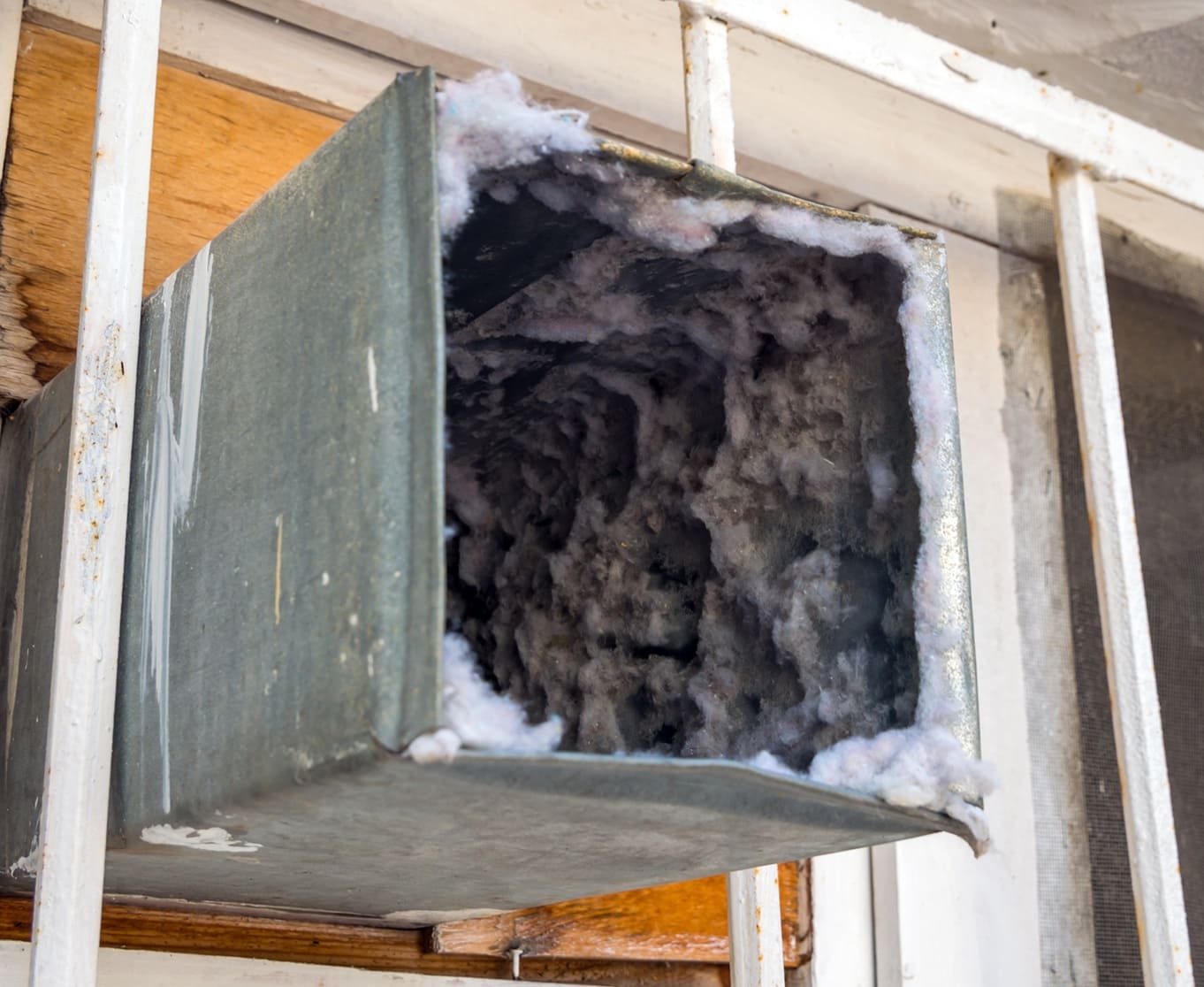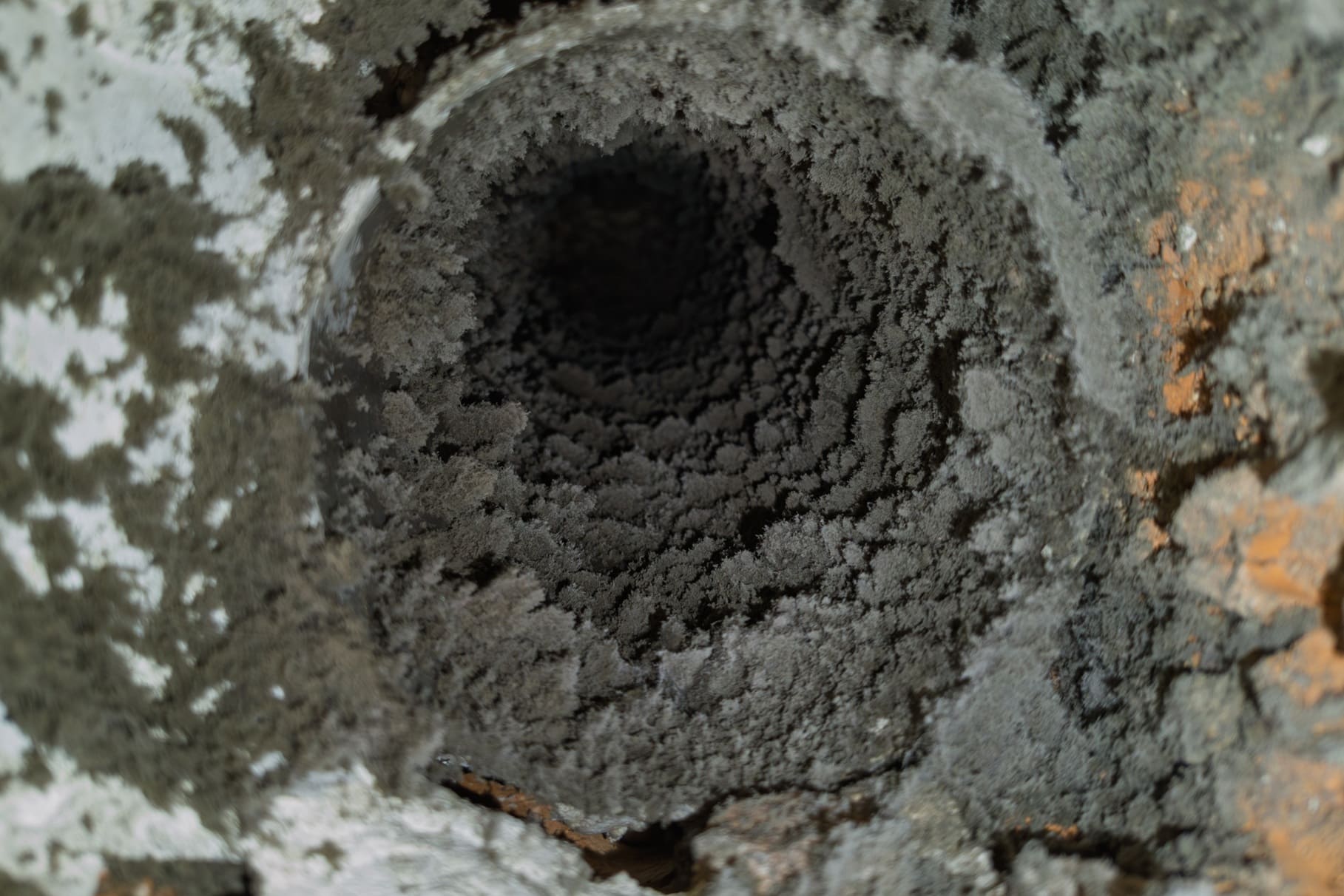CALL YOUR TRUSTED LOCAL EXPERTSSM
What Causes Mold in Ductwork? Signs & How to Prevent It
By Dave Musial: CEO of Four Seasons Heating, Air Conditioning, Plumbing, Electric.
- October 27, 2025
Understanding Mold in Ductwork
Quick Summary
- Moisture is the root cause – Mold needs moisture to grow.
- Keep humidity between 30-50 percent – Controlling indoor humidity is your first line of defense.
- Maintain your HVAC system regularly – Change filters every 1-3 months, clean condensate drains seasonally, and schedule professional inspections annually
- Professional cleaning protects your health – When mold is present, certified technicians use negative air machines and HEPA filtration to safely remove spores.
- Prevention beats remediation – UV-C lights, proper insulation, sealed duct joints, and consistent maintenance stop mold before it starts
What Causes Mold in Ductwork?
Mold needs only three things to thrive—moisture, organic material, and ideal temperatures. Duct systems often supply all three.
Condensation forms when cold, conditioned air meets humid surroundings. Dust and lint stuck to duct linings provide a food source. Without adequate ventilation or filtration, moisture stays trapped, encouraging mold formation and spread.
Common triggers include:
- Leaks from roof, attic, or nearby plumbing
- Poorly sealed or uninsulated duct joints
- Dirty evaporator coils and drip pans
- Restricted airflow from old or clogged filters

Understanding Mold in Ductwork
Even a small water leak can set off a chain reaction. When moisture infiltrates duct insulation or seams, spores find a damp surface to colonize.
Air passing through those ducts then carries spores farther along the system. Unchecked moisture creates a perfect place for mold to grow. Colonies multiply quickly and release thousands of spores into the air with each HVAC cycle.
Moisture intrusion can stem from roof leaks, damp crawlspaces, or condensation on metal ducts exposed to cool air. Routine annual inspections help catch those problems early—before they spread throughout the air distribution network.
Recognizing the Warning Signs of Mold in Your Ducts
Mold often grows hidden inside ductwork, but your HVAC system will send clear signals when contamination is present. Catching these warning signs early helps you address the problem before it affects your health or spreads further.
- Musty or earthy odors
- Strange coloration around vents or registers
- Increased allergy or respiratory symptoms
- Condensation or moisture around ducts
If you notice any of these signs, schedule a professional HVAC inspection to assess your ductwork and determine the extent of contamination. Early detection makes remediation faster, more affordable, and protects your family's indoor air quality.
Relative Humidity and the Mold Connection
Humidity control plays one of the largest roles in mold prevention. When relative humidity goes above 60 percent, the air reaches its dew point faster. This allows condensation to form in ducts and vents.
Maintaining humidity between 30 and 50 percent keeps indoor conditions comfortable and inhospitable to mold. In humid areas, a whole-home dehumidifier or a ventilating fan can help reduce excess moisture. This can stop mold from growing in the ducts.
Condensate Drain: The Hidden Water Source
Your air conditioner removes humidity from the air, collecting water in a drain pan that funnels out through the condensate line. A clogged or improperly sloped drain traps standing water—a perfect habitat for microbial growth. Algae and biofilm often accumulate within the drain line itself, creating stubborn blockages that require professional attention to fully clear and restore proper drainage function.
Warning signs include a musty smell near the air handler, visible pooling around the unit, or drain line overflow. Homeowners can flush the line seasonally using a mild vinegar solution, though maintenance technicians should still inspect the pan and tubing during each service visit.
Air Handler: Where Mold Starts Spreading
The air handler contains critical components such as the evaporator coil, blower, and filtration system. When coils develop condensation and dust collects, mold can form right at the source. Each time the system cycles on, those spores get distributed through the ducts.
Regular coil cleaning, changing filters every one to three months, and ensuring the air handler housing remains dry are important measures. Left unattended, buildup here can undermine the entire HVAC system’s cleanliness.
Negative Air Machines and HEPA Filtration: Safe Mold Removal
When professionals clean contaminated ductwork, they rely on negative air machines—a setup that places the system under slight suction so loosened debris flows away safely. Coupled with High‑Efficiency Particulate Air (HEPA) filtration, this equipment traps 99.97 percent of particles down to 0.3 microns, including mold spores and dust.
These practices prevent particles from escaping back into the home during cleaning. Homeowners should avoid DIY chemical fogging or vent vacuuming kits, which often scatter spores instead of removing them.
Ultraviolet Germicidal Irradiation (UVGI): Advanced Mold Prevention
Ultraviolet‑C light offers a long‑term line of defense against microbial contamination. Installed near coils or inside air handlers, UV lamps disrupt the DNA of mold spores and bacteria, rendering them inactive.
Continuous exposure to UV‑C light keeps surfaces within the HVAC unit sterile, improving airflow and reducing odors. Combined with proper moisture control, UV lights extend system cleanliness and minimize the need for intensive duct cleaning.
Sanitizing and Encapsulation: Sealing the Protection
After mold remediation, technicians may apply sanitizing agents to disinfect duct surfaces. This process neutralizes remaining microbes but doesn’t prevent future contamination. Encapsulation goes one step further—coating the interior with a specialized sealant that locks down residual particles and resists moisture absorption.
Encapsulation proves valuable for older duct systems or those made of porous materials like fiberglass, helping safeguard against re‑growth long after treatment.
Airborne Contaminants: Mold Spores, Particles, and VOCs
Mold is only one factor influencing indoor air quality. Ductwork can also circulate particulate matter (PM 2.5 and PM 10), volatile organic compounds (VOCs), and bioaerosols such as pollen or bacteria. When combined, these pollutants trigger respiratory irritation, fatigue, or persistent odors.
Regular duct maintenance, clean filtration, and controlled humidity work together to reduce these airborne pollutants, creating cleaner, more breathable indoor air.

How to Prevent Mold Growth in Air Ducts
Prevention requires managing both moisture and airflow:
- Keep indoor humidity below 50 percent with dehumidifiers or ventilation fans.
- Seal duct joints and insulate exposed areas, especially in attics or basements.
- Replace filters regularly to limit dust accumulation.
- Clean condensate drains and pans every season.
- Schedule professional duct inspections every few years or after any water incident.
- Consider UV‑C installation for long‑term microbial control.
These measures stop mold from finding the damp, stagnant environments it needs.
Final Thoughts: Healthy Air Starts with Clean Ducts
Mold inside air ducts can undermine home comfort, reduce energy efficiency, and compromise health. Understanding how moisture intrusion, humidity, and air handler issues intertwine helps homeowners act before the first musty smell appears.
By managing humidity, maintaining your HVAC components, and relying on certified professionals when cleaning is needed, you’ll preserve both indoor air quality and system longevity. Cleaner ducts mean healthier living for everyone breathing inside your home.


